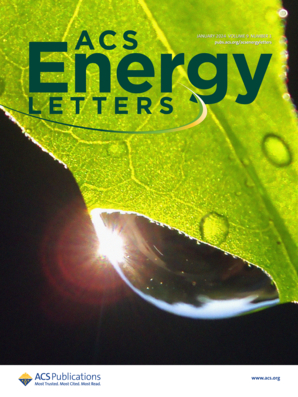Charge Extraction Multilayers Enable Positive-Intrinsic-Negative Perovskite Solar Cells with Carbon Electrodes
IF 19.3
1区 材料科学
Q1 CHEMISTRY, PHYSICAL
引用次数: 0
Abstract
Perovskite solar cells achieve high power conversion efficiencies but usually rely on vacuum-deposited metallic contacts, leading to high material costs for noble metals and stability issues for more reactive metals. Carbon-based materials offer a cost-effective and potentially more stable alternative. The vast majority of carbon-electrode PSCs use the negative-intrinsic-positive (n-i-p) or “hole-transport-layer-free” architectures. Here, we present a systematic study to assess the compatibility of “inverted”, p-i-n configuration PSC contact layers with carbon top electrodes. We identify incompatibilities between common electron transport layers and the carbon electrode deposition process and previously unobserved semiconducting properties in carbon electrodes with unique implications for charge extraction and electronic behavior. To overcome these issues, we introduce a double-layer atomic layer deposited tin oxide (SnO2) and Poly(2,3-dihydrothieno-1,4-dioxin)-poly(styrenesulfonate) (PEDOT:PSS), yielding up to 16.1% PCE and a retained 94% performance after 500 h of outdoor aging. The study is a crucial step forward for printable, metal-electrode-free, and evaporation-free perovskite PV technologies.

电荷提取多层膜使碳电极钙钛矿太阳能电池具有正、本征、负特性
钙钛矿太阳能电池实现了高功率转换效率,但通常依赖于真空沉积的金属触点,这导致贵金属的材料成本高,以及活性金属的稳定性问题。碳基材料提供了一种具有成本效益且可能更稳定的替代品。绝大多数碳电极psc使用负本征-正(n-i-p)或“无空穴传输层”结构。在这里,我们提出了一个系统的研究,以评估“倒”,p-i-n配置PSC接触层与碳顶电极的相容性。我们确定了共同电子传输层与碳电极沉积过程之间的不兼容性,以及碳电极中以前未观察到的半导体特性,对电荷提取和电子行为具有独特的意义。为了克服这些问题,我们引入了一种双层原子层沉积氧化锡(SnO2)和聚(2,3-二氢噻吩-1,4-二恶英)-聚苯乙烯磺酸盐(PEDOT:PSS),在室外老化500小时后,PCE的收率高达16.1%,性能保持在94%。这项研究是可打印、无金属电极和无蒸发钙钛矿光伏技术向前迈出的关键一步。
本文章由计算机程序翻译,如有差异,请以英文原文为准。
求助全文
约1分钟内获得全文
求助全文
来源期刊

ACS Energy Letters
Energy-Renewable Energy, Sustainability and the Environment
CiteScore
31.20
自引率
5.00%
发文量
469
审稿时长
1 months
期刊介绍:
ACS Energy Letters is a monthly journal that publishes papers reporting new scientific advances in energy research. The journal focuses on topics that are of interest to scientists working in the fundamental and applied sciences. Rapid publication is a central criterion for acceptance, and the journal is known for its quick publication times, with an average of 4-6 weeks from submission to web publication in As Soon As Publishable format.
ACS Energy Letters is ranked as the number one journal in the Web of Science Electrochemistry category. It also ranks within the top 10 journals for Physical Chemistry, Energy & Fuels, and Nanoscience & Nanotechnology.
The journal offers several types of articles, including Letters, Energy Express, Perspectives, Reviews, Editorials, Viewpoints and Energy Focus. Additionally, authors have the option to submit videos that summarize or support the information presented in a Perspective or Review article, which can be highlighted on the journal's website. ACS Energy Letters is abstracted and indexed in Chemical Abstracts Service/SciFinder, EBSCO-summon, PubMed, Web of Science, Scopus and Portico.
 求助内容:
求助内容: 应助结果提醒方式:
应助结果提醒方式:


